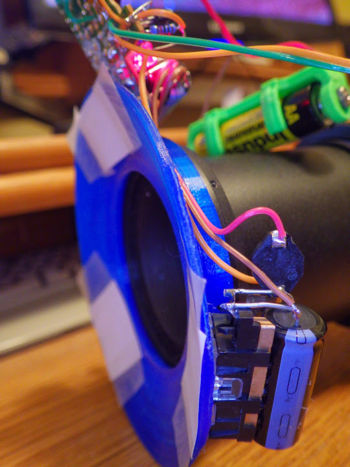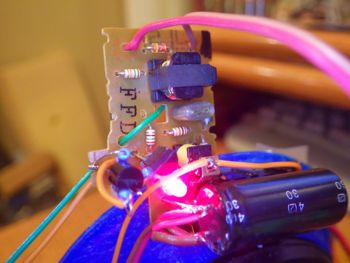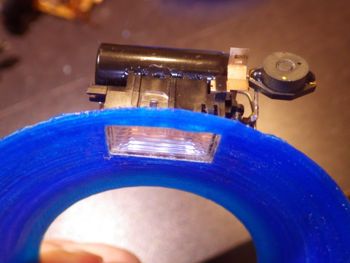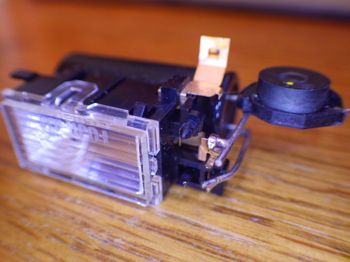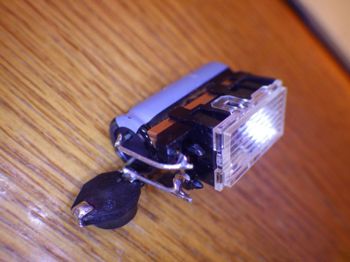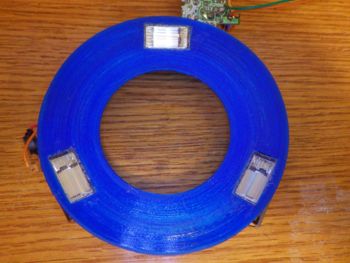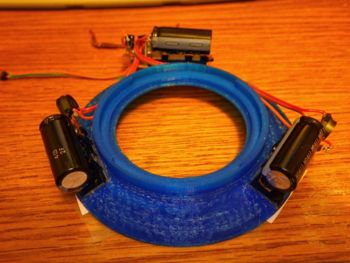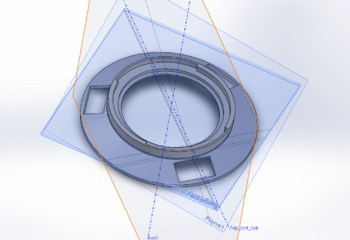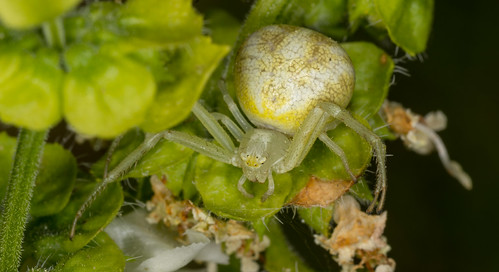Difference between revisions of "3D Printed Strobe Ringlight"
m (typo) |
m |
||
| Line 26: | Line 26: | ||
== Mount == | == Mount == | ||
| − | Currently the trigger SCR and interfacing PNP transistor are piggybacked onto the stock power supply and trigger board mounted to the topmost strobe. However, the AA battery and holder are currently floating with no home. I would like to design a buck converter to take a lipo down to the required 1.5V or re-design the power converter to run well off of 3.7V as AA batteries are | + | Currently the trigger SCR and interfacing PNP transistor are piggybacked onto the stock power supply and trigger board mounted to the topmost strobe. However, the AA battery and holder are currently floating with no home. I would like to design a buck converter to take a lipo down to the required 1.5V or re-design the power converter to run well off of 3.7V as AA batteries are bulky and do not perform well under cold conditions. |
=Results= | =Results= | ||
<flickr>13678754815|thumb|left|The light is pretty even for just three lights</flickr><br clear="both"> | <flickr>13678754815|thumb|left|The light is pretty even for just three lights</flickr><br clear="both"> | ||
It's WAY too bright for macro work, though it would work well for classical/portrait photography. At the very least a piece of printer paper has been placed over each strobe to dim it slightly. I really need to add a quench circuit to redirect and interrupt the current path slightly with a programmable (if manual) delay. A 555 pulse generator could work well here. | It's WAY too bright for macro work, though it would work well for classical/portrait photography. At the very least a piece of printer paper has been placed over each strobe to dim it slightly. I really need to add a quench circuit to redirect and interrupt the current path slightly with a programmable (if manual) delay. A 555 pulse generator could work well here. | ||
Revision as of 17:47, 10 April 2014
Problem Statement
This project is a fork of the previous 3D_printed_LED_Ringflash project. I want actual strobes for when I want crystal clear, bright, short duration burst of light. This is especially useful for deep macro handheld work. I want to use disposable cameras for everything except the camera interface which will require SCRs or transistors.
System Overview
The system consists of a power supply and trigger, a 3D printed mount for the circuitry, a power source, a 3D printed structure to mount the strobes on, and the strobes themselves.
Power Supply and Trigger
For now these will just be the disposable camera board with the beefiest transformer that I can find. Charge times will be slow because there will be three capacitors instead of just the usual single cap. Triggering will be accomplished by an SCR tied to the PC-Sync output of my camera.
Strobes
The strobe and capacitor assembly have been harvested from the disposable cameras. The capacitor is glued to the strobe housing with locktite flexible adhesive and the same glue is used to secure the strobes within the structure. Inductors are used to isolate the capacitor/strobes from the power supply to avoid tubes from stealing each other's pulses and exploding.
Structure
Ring
The ring structure was based on the LED version but redesigned to include the proper hole pattern.
Mount
Currently the trigger SCR and interfacing PNP transistor are piggybacked onto the stock power supply and trigger board mounted to the topmost strobe. However, the AA battery and holder are currently floating with no home. I would like to design a buck converter to take a lipo down to the required 1.5V or re-design the power converter to run well off of 3.7V as AA batteries are bulky and do not perform well under cold conditions.
Results
It's WAY too bright for macro work, though it would work well for classical/portrait photography. At the very least a piece of printer paper has been placed over each strobe to dim it slightly. I really need to add a quench circuit to redirect and interrupt the current path slightly with a programmable (if manual) delay. A 555 pulse generator could work well here.
